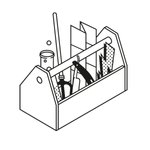
Saved by Jay Matthews
Why Model? | Santa Fe Institute

Saved by Jay Matthews

Everything we think we know about the world is a model. Every word and every language is a model. All maps and statistics, books and databases, equations and computer programs are models. So are the ways I picture the world in my head—my mental models. None of these is or ever will be the real world. Our models usually have a strong congruence with
... See more